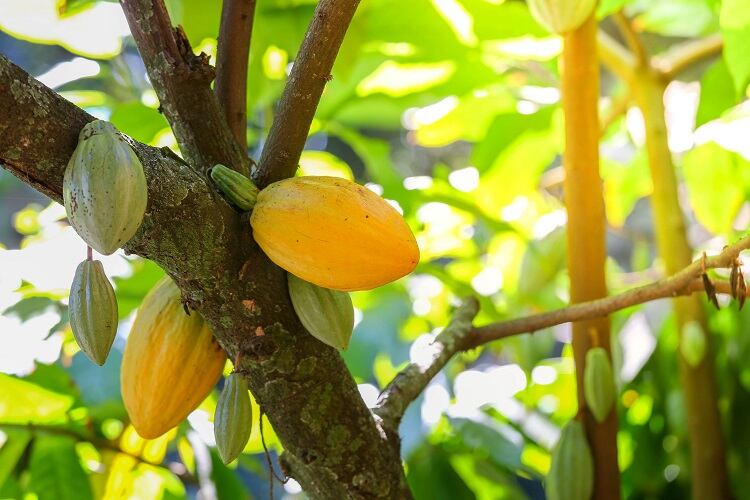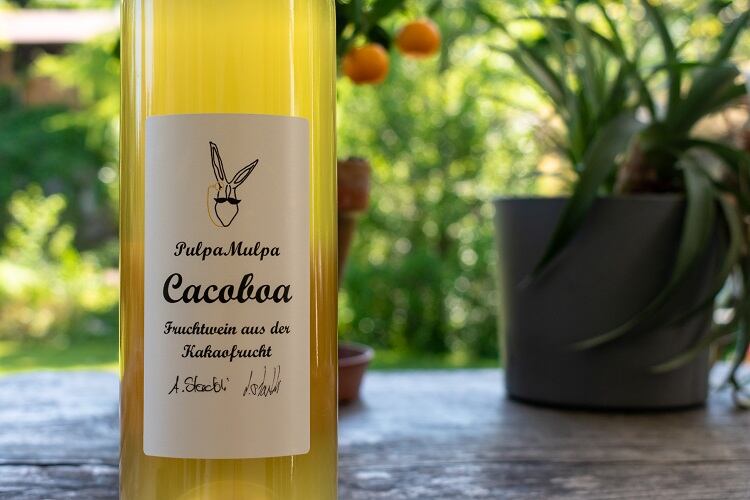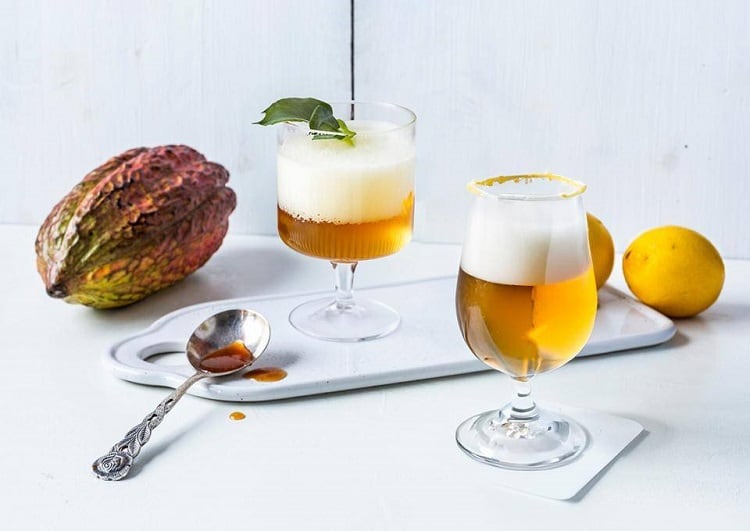Along with cocoa beans, the cocoa tree also produces cacao fruit. Cacao fruit comes from the cacao pod, where cocoa beans, and thus chocolate products, originate.
While traditionally, 70% of the cacao pod is thrown away, Cabosse Naturals, a brand from global chocolate producer Barry Callebaut, is now developing products from the cacao fruit using the pulp, peel and juice from the pod.
There is significant potential for the cacao fruit. A number of 2024 trends suggest that it could be popular. For example, the ‘whole cacao’ has been identified as a 2024 trend by Amazon-owned Whole Foods, which points out that while the whole cacao fruit has been utilised ‘for centuries’ in some parts of the world, it is now becoming a trend. It can be used in products ranging from sorbets and ice creams to dairy products and confectionery.

In particular, cacao fruit has seen success in the beverage industry, being used as an ingredient in a range of beers and wines. There were, for example, a number of launches of beers and wines containing cacao fruit in 2023, including the Cacoboa Wine and Pulpoca (seltzer), a wine from Pulpa Mulpa in Switzerland; It’s All Good Imperial Latin Gose, a beer from Kehrwieder Brewery in Germany; and the Acan’s Mallow Tree, a sour ale from North Antwerp Brewery in Belgium.
Bringing something new to beer and wine
If a producer decides to put cacao fruit in its beer or wine, the main thing it need to think about is the taste. Adding a product derived from the same source as chocolate to a drink usually made mainly from hops or grapes is unconventional, but according to William Angleys, sales director at Cabosse Naturals, it provides a flavour that works well with these products.
Cacao fruit gives beer and wine a “zesty signature flavour (that) is deliciously refreshing and brings complex notes and natural sweetness to the beer and wine, which contributes to a subtle tanginess and fruity essence that provides a refreshing and intriguing contrast to the traditional (versions),” he told FoodNavigator.
“For the beer process specifically, depending on the brewing process and the choice of cacao fruit variety, the beer may exhibit hints of citrus, berry, or even floral notes, creating a dynamic and layered drinking experience.”
According to, Tön Staubli, CEO at Pulpa Mulpa, who produce the Cacoboa Wine and Pulpoca (seltzer), the wine is ‘different in taste’ to conventional wine, and consumers who don’t ordinarily like the taste of wine drink the product. Younger people, who have not yet got into the habit of drinking wine, have described the product as ‘entry-level wine,’ and ‘get a taste for wine’ by drinking it.
“The flavour profile of our products is very diverse. The wine (Cacoboa) tastes of honey and lychee, followed by a little rose water, with a perfectly balanced sweetness and acidity ratio. Our drink (Pulpoca) tastes of grapefruit with citrus fruits with a pleasant freshness. It can therefore be said that the pulp tastes very different to chocolate and is therefore not comparable,” he told FoodNavigator.

“The feedback from customers is very good! They find the story behind the products exciting, as they often didn't even know at first that the pulp is a waste product or that there is a pulp at all. They are often surprised by the taste, as they often expect it to taste like chocolate. If a customer doesn't like chocolate, they may like our product, although it is made from the same fruit.
“It can therefore be said that our product and the pulp of the cocoa fruit, like chocolate, are also good for the masses,” he concluded.
Saving waste
Does the fruit have the potential to be popular with modern consumers? According to Cabosse Naturals' Angleys, the upcycled element of cacao fruit makes it well-suited to a more socially conscious consumer base.
“The cacao fruit is discovered by pioneering beverage brands because of its unique, new and refreshing taste, but also from a sustainability and social point of view,” he told FoodNavigator.
“All ingredients are Upcycled Certified, which empowers consumers to make an impact with every sip and bite.” The certification for upcycling was first released in 2021, and aims to assure the consumer that a product has been upcycled, and is thus low in waste. This, suggested Angleys, is the key to cacao fruit’s appeal with modern consumers.
It can also potentially provide economic benefits to its producers. “Using the fruit pulp increases the income of the farmers, who can use the money to provide their children with a better education or invest in their homes. It also opens up a completely new market. This boosts the economy, gives consumers more choice and generally improves their quality of life,” added Staubli.


